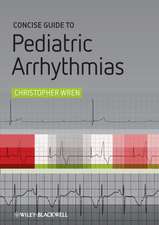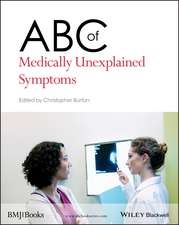Physiologically Based Pharmacokinetic Modeling – Science and Applications
Autor RS Reddyen Limba Engleză Hardback – 14 iul 2005
Preț: 1166.39 lei
Preț vechi: 1227.79 lei
-5% Nou
Puncte Express: 1750
Preț estimativ în valută:
223.21€ • 231.72$ • 186.12£
223.21€ • 231.72$ • 186.12£
Carte tipărită la comandă
Livrare economică 22 martie-05 aprilie
Preluare comenzi: 021 569.72.76
Specificații
ISBN-13: 9780471478140
ISBN-10: 0471478148
Pagini: 440
Dimensiuni: 166 x 241 x 29 mm
Greutate: 0.72 kg
Editura: Wiley
Locul publicării:Hoboken, United States
ISBN-10: 0471478148
Pagini: 440
Dimensiuni: 166 x 241 x 29 mm
Greutate: 0.72 kg
Editura: Wiley
Locul publicării:Hoboken, United States
Public țintă
Toxicologists, ecotoxicologists, risk assessors, regulators, pharmacologists, pharmacists.Cuprins
Preface.
Chapter 1.Introduction: A Historical Perspective of the Development and Applications of PBPK Models.
1. Introduction.
2. A Historical Perspective.
3. Expansion of PBPK Model Applications.
4. Summary.
SECTION 1. PBPK MODELING FOR VOLATILE ORGANIC COMPOUNDS.#
Chapter 2. Halogenated Alkanes.
1. Introduction.
2. PBPK Model Development for Volatile Organics.
3. Advances in Experimental Methods Demonstrated for Groups of Chemicals.
4. PBPK Models for Halogenated Alkanes.
5. Summary.
Chapter 3. Halogenated Alkenes.
1. Introduction.
2. The Chloroethylenes: Background.
3. Review of PBPK Models.
4. Summary.
Chapter 4. Alkene and Aromatic Compounds.
1. Introduction.
2. PK and Pharmacodynamic Properties Important in PBPK Model Development for Aromatic and Alkene Compounds.
3. Review of Aromatic and Alkene PBPK Models.
4. Summary.
Chapter 5. Reactive Vapors in the Nasal Cavity.
1. Introduction.
2. No Air-Phase Models.
3. Creating the Air Phase Compartments.
4. Other Models for Vapors Affecting Nasal Tissues.
5. Methyl Methacrylate.
6. Formaldehyde.
7. Hydrogen Sulfide.
10. Summary.
Chapter 6. Alkanes, Oxyhydrocarbons and Related Compounds.
1. Introduction.
2. Purposes for PBPK Model Development.
3. PBPK Models for Four Classes of Compounds.
4. Summary.
SECTION 2. PBPK MODEL DEVELOPMENT FOR ENVIRONMENTAL POLLUTANTS.
Chapter 7. Pesticides and Persistent Organic Pollutants (POPs).
1. Introduction.
2. Pesticides.
3. Polychlorinated and Polybrominated Biphenyls, PCBs and PBBs.
4. Summary.
Chapter 8. Dioxin and Related Compounds.
1. Introduction.
2. Toxicity.
3. Mode of Action.
4. Pharmacokinetics.
5. PBPK Models of TCDD.
6. Summary.
Chapter 9. Metals and Inorganic Compounds.
1. Introduction.
2. Physiologically Based Modeling of Metals.
3. PBPK Models for Non-Metals.
4. Compartmental Models for Miscellaneous Inorganic and/or Endogenous Chemicals.
5. Research Needs.
6. Summary.
SECTION 3. PHARMACEUTICAL APPLICATIONS OF PBPK MODELS.
Chapter 10. Drugs.
1. Introduction.
2. Describing the Tissue Distribution of Drugs.
3. Describing Metabolism and Other Clearance Processes of Drugs.
4. Other Issues in Model Development for Drugs.
5. Future Perspectives.
6. Summary.
Chapter 11. Antineoplastic Agents.
1. Introduction.
2. PBPK Models for Antineoplastic Agents.
3. Summary.
SECTION 4. PBPK MODELING APPROACHES FOR SPECIAL APPLICATIONS.
Chapter 12. Perinatal Transfer.
1. Introduction.
2. Physiological and Biochemical Changes During Pregnancy.
3. Physiological Factors Incorporated into PBPK Models for Perinatal Pharmacokinetics.
4. PBPK Models for Perinatal Transfer.
5. Risk Assessment Dosimetry Models.
6. Summary.
Chapter 13. Mixtures.
1. Introduction.
2. PBPK Modeling Of Chemical Mixtures.
3. Future Perspectives: Second Generation PBPK/PD modeling.
4. Summary.
Chapter 14. Dermal Exposure Models.
1. Introduction.
2. Factors to Consider in Modeling Dermal Absorption.
3. Dermal Absorption Models.
4. Experimental Methods.
5. Summary.
Chapter 15. Conclusions and Future Directions.
1. Introduction.
2. A Systems Approach for Pharmacokinetics.
3. Modeling Both Dose and Response.
4. Opportunities for PBPK Modeling in Pharmaceutical Industry.
5. Reaction Network Modeling with Xenobiotics.
6. Systems Biology and Dose-Response.
7. Summary.
Descriere
This book describes the development of physiologically-based pharmacokinetics (PBPK) modeling for toxic compounds over the past eight decades as well as the current uses of these models. It reviews PBPK model results for various classes of compounds with coverage of historical development, specific modeling challenges and current practices.








